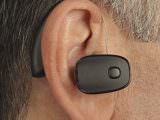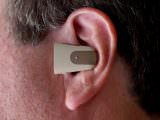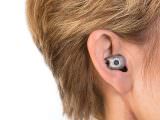Alternatives to High Cost Hearing Aids
A June 2016 report on age-related hearing loss from the National Academies of Sciences, Engineering and Medicine put the prevalence of loss at more than 45 percent of those aged 70 to 74, and more than 80 percent among those over 85. However, fewer than 20 percent of those with hearing loss use hearing aids. Potential consumers sight high prices ($2,500 and up for a decent hearing aid, and most people need two), lack of Medicare reimbursement, time, hassle and stigma.
Nicholas S. Reed, AuD, (Johns Hopkins Center on Aging and Health, Department of Otolaryngology), conducted a study on Personal Sound Amplification Products (PSAPs). These products are less-expensive, over-the-counter devices and are technologically comparable with aids and may be appropriate for mild to moderate hearing loss. Reed and his team compared a sample of these devices with a conventional hearing aid among individuals with mild to moderate loss.
The Results
Three of the PSAPs, all available online and over the counter, demonstrated an improvement that was within 5 percentage points of the hearing aid.
Sound World Solutions CS50+ with a price tag of $359 (Amazon) had an accuracy of 87.4% and is recommended to help in difficult to hear environments:
One-on-one and other small group conversations
Public settings including restaurants and churches
In your car and while on the go
Work and Business Meetings
Watching TV and Movies
Listening to music, and audio books

Soundhawk had an accuracy of 86.7% With a price tag of $350, Soundhawk is right for people who experience any of the following:
Problems understanding speech in noisy places, like restaurants
Difficulty hearing quiet sounds, like the TV when the volume is set too low by other people in the room
Challenges hearing people talking at a distance.

Etymotic BEAN had an accuracy of 84.1% The BEAN is an affordable device ($215) that amplifies quiet sounds, allowing users to hear more clearly in a variety of environments including social settings, cars, on the phone and at a distance.

Conclusion
The PSAPs on the market today look identical to hearing aids, and are marketed to those with hearing loss. The lack of regulation by the FDA may foster faster innovation which will only improve upon the PSAP’s recommended above.
A good PSAP has:
- a good frequency response that includes small differences in the output of low frequencies versus high frequencies,
- includes updated digital sound processing including noise reduction and/or directionality,
- has a good design and overall fit for the user,
- is easy to use with a clear instruction manual,
- and has a positive user rating and reviews
For more information about PSAPs, visit the websites listed below.
For more blog posts by Virginia Tortorici, click here.